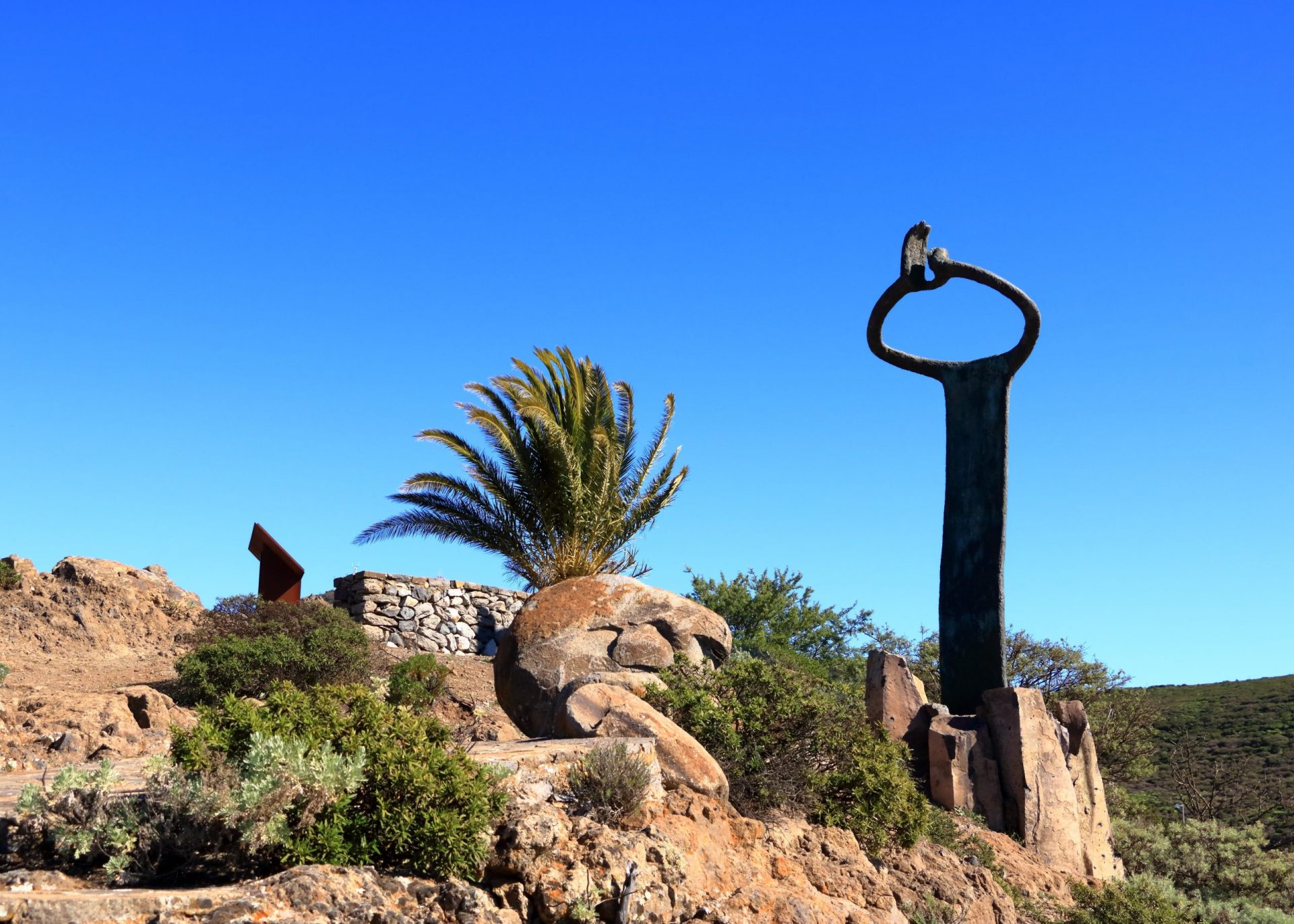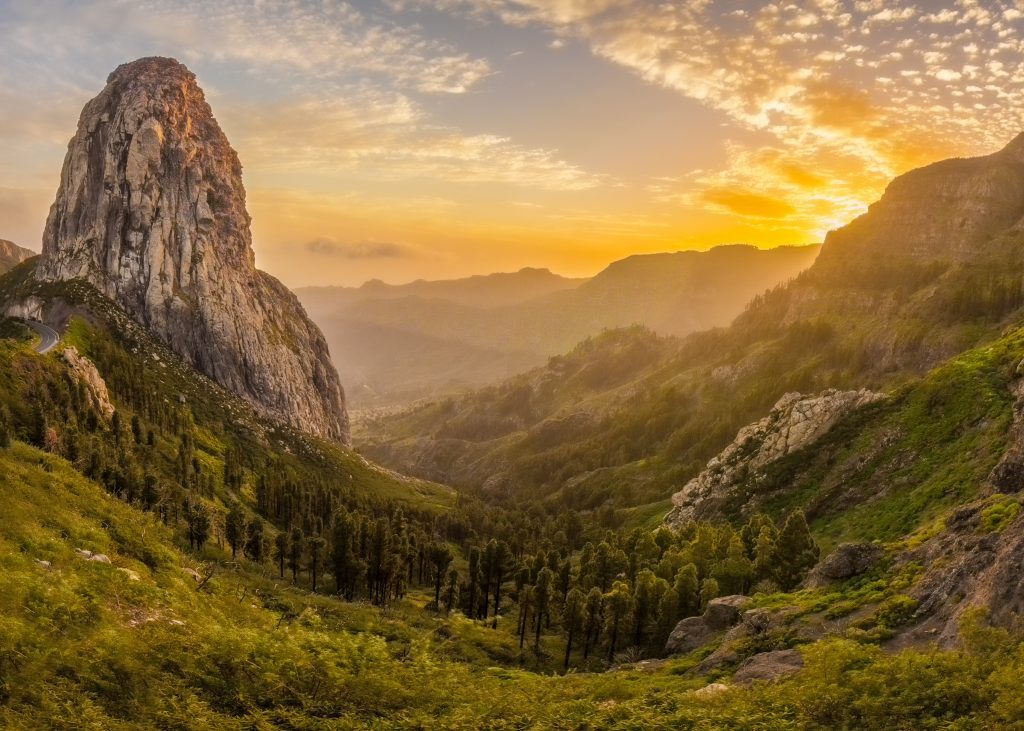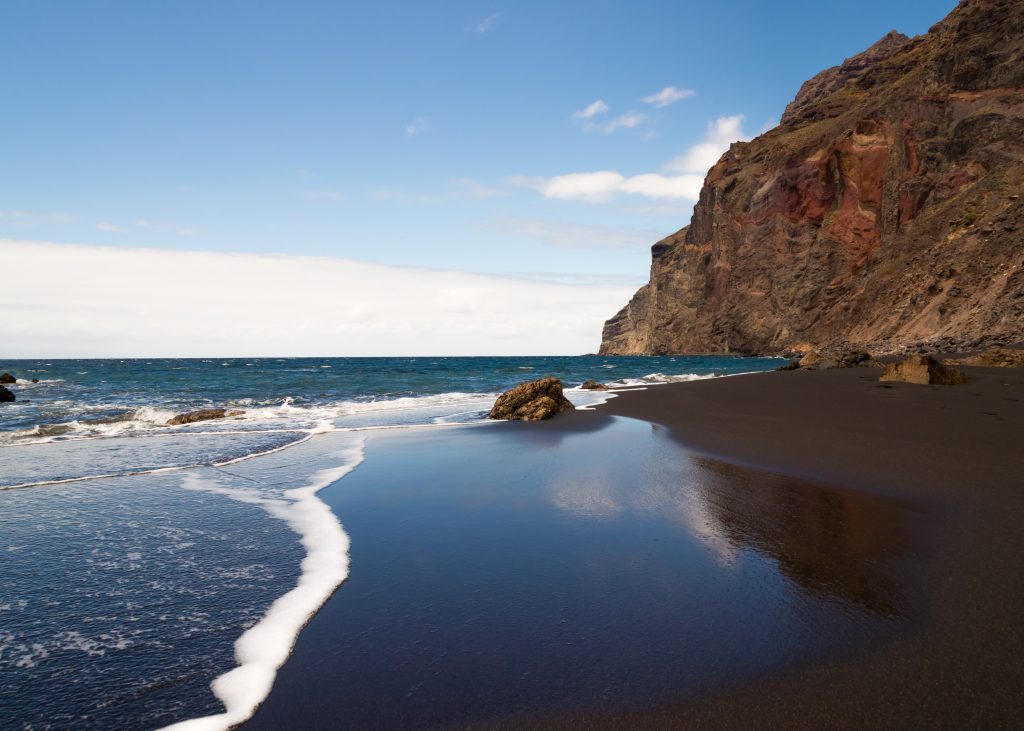For centuries, La Gomera inhabitants have used the whistled language ‘Silbo Gomero’ to communicate. Threatened with extinction, the local government stepped in to save this important element of the island’s heritage.
Picture this: you are a shepherd on the mountainous island and would like to speak to a fellow shepherd on the other side of a deep gorge. For example: “I lost a sheep, did you see it?” How to do so, without a mobile phone or other technical aids?
Islander Juan Cabello partly earned his living with Silbo Gomero when tourists visited the island. He whistled a few sentences or jokes every day in a restaurant on the island where, in pre-corona times, many day-trippers from Tenerife came to have lunch. Like so many people on La Gomera, he learned Silbo Gomero from his father and grandfather. He uses it to call his wife, announce his arrival to someone in advance, or find a friend he has lost in a crowd. With the ring finger under the tongue and the other hand as a kind of megaphone next to the mouth, he produces bright whistles. It does not seem to be easy to learn and practically impossible for those who do not speak Castilian.
Most advanced with 4,000 words
Of all the flute languages worldwide, Silbo Gomero is the first to be scientifically studied. According to Moises Plasencia, director of the historical heritage department of the Canarian government, none of the well-known flute languages are as advanced as Silbo Gomero. As far as we know, all flute languages originated in isolated, difficult to reach and often mountainous areas. Whistling, a distance of three kilometres can easily be covered. That is impossible with spoken language.
The language is practical in nature. Based on the available vowels and consonants, Silbo Gomero contains approximately four thousand words. The words are especially suitable for forming practical sentences such as: “come quickly!”, “open the gate”, “help” or “what time will you be back?”
How does Silbo Gomero work?
According to linguists, whistle languages are always based on the spoken languages of the area in question. For example, El Silbo Gomero – “silbo” comes from the verb “silbar”, the Spanish word for flutes – based on Castilian. There are two types of whistle languages. The differences between the two are based on the differences in the language that forms the basis for them. Some languages use pitch in spoken form to make a difference in meaning. The second category is based on languages that have no pitch difference, such as Spanish and Dutch.
Although Silbo Gomero is based on Spanish, the whistled language is much more limited and has only two vowels and four consonants. According to psychologist Manuel Carreiras, this could easily lead to misunderstandings were it not that a shared cultural context simplifies the interpretation of the semantic content. A shepherd would know that a whistled word that sounds like “ship” means “sheep” after all. In practice on La Gomera, this simplification of Spanish in whistled form is no problem at all. While listening to a silbador being subtitled, a layman can still understand the meaning of the whistled message.
The origins of an important heritage
Little is known of the original language or languages of the Canary Islands. It is assumed the phonetic system must have been simple enough to base an efficient flute language on. The early inhabitants of La Gomera and the other islands of the Canary archipelago, the “Guanches” (descendants of Berbers) are said to have invented Silbo Gomero.
When the Spanish began to colonise the Canary Islands around the 15th century, the language changed. The Spaniards adopted the flute language. They added more and more of their own vocabulary to bridge gorges and mountains while whistling.
In recent decades, the number of Silbadores has fallen sharply. This is due to a reduced interest of the younger population to master the language and inventions such as (mobile) telephony.
In 1998, it was estimated there were only thirty fluent whistlers left. Many residents of La Gomera can whistle a few words or sentences, but are unable to really communicate with them or fully understand a whistled story.
Silbo Gomero at school
Concerned about the imminent disappearance of this special heritage, the local government took measures. Since 1999, Silbo Gomero has been a compulsory subject in La Gomera’s primary and secondary schools. About three thousand students study the unique language for half an hour a week.
Immaterial Cultural Heritage
Moises Plasencia’s fanatic lobby of UNESCO to officially declare Silbo Gomero a cultural heritage bore fruit on September 30th, 2009. Since then, the whistling language has been officially on the list of Immaterial Cultural Heritage of the international organisation. According to Plasencia, this appointment confirms the unique historical, linguistic, anthropological and cultural aspects of Silbo Gomero. Furthermore, it makes the flute language much more likely to be preserved for posterity.
La Gomera
After El Hierro, La Gomera is the smallest island of the Canary Archipelago. Located 25 kilometres southwest of Tenerife, the only way to reach La Gomera is by boat from the south of Tenerife. The volcanic and partly very fertile landscape is magical to see. Tropical forests alternate with bare, volcanic rocks that are often covered by a mysterious fog. Deep gorges and sharp valleys combine to create a rugged landscape.
The Garajonay National Park and World Heritage Site contains a famous laurel forest. When the European Union stopped subsidies for banana cultivation in 2003 – the island’s main source of income, many farmers switched to the growing tourism sector. Compared to the other islands, it remains small-scale and mainly ecological in nature. Tourists do not like to lie on black sand beaches. Moreover, no charter aircraft land at the small airport.
More information via: www.gomera.info or www.gomera-island.com or www.turismodecanarias.com.




